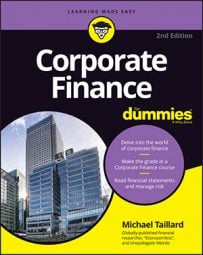When people talk about securities, more frequently than not they’re referring to equity securities, also known as stocks. Equity securities aren’t even close to being the only type of security out there, though. Securities include any financial investment that derives its value from an underlying asset.
So while stocks are a type of security whose value is derived from the ownership in a corporation that’s also changing in value, bonds derive their value from underlying assets, as do mutual funds and derivatives. With that in mind, people can make securities out of just about anything.
Securitization is the creation of new forms of securities, or new classifications of an existing security, based on some asset that currently has value or future value but in which no one is yet investing. The goal is to raise funds and distribute risk to a group of people seeking risk. You can do this with just about anything that has value. That’s securitization, and it’s a common trend in financial engineering.
Consider the role of commodities trading. Although it isn’t considered a form of financial engineering, it helps illustrate what securitization is. In commodity trading, brokers act as intermediaries between producers and processors or retailers, usually for agricultural goods and natural resources, though a number of other things are also included.
You can securitize everything
If people can securitize things like coffee, gold, and businesses, then why can’t they securitize everything? The answer: They can! One of the trends in financial engineering is to find assets that have value and securitize them, developing securities that derive their value from that asset.
Probably the most successful development in securitization, as measured by the popularity of its use, is the mortgage-backed security (MBS). An MBS starts out with the banks; they issue mortgages just like any normal bank.
The future cash flows on those mortgage loans are considered an asset now, because the bank will receive repayments from the borrower both for the principal balance as well as the interest payments. The banks then sell securities that use those future cash flows as the underlying asset.
The banks sell the securities for cash to investors, and then repay the investors using the future cash flows on the mortgages. The investors generate a return on investment, and the banks use the capital raised from selling the securities to reinvest and increase the current value of future cash flows from the increased number of mortgages issued.
Alternatively, MBSs are a way for banks, particularly smaller ones, to limit their exposure to risk by issuing loans. Because a mortgage that goes into default doesn’t continue to generate cash flows, the holder of the MBS is the one who loses value on his investment should a mortgage default, not the bank.
By selling mortgage loans to the investment market in the form of MBSs and thereby distributing the risk among a larger group of people, banks can reduce their own risk exposure on these loans. (In these MBSs, multiple mortgages are bundled together into a single security called a pass-through certificate.)
Sounds great, but as with most new financial products, there are new risks. This distribution of risk in the form of MBSs also helped to distribute the risk of sub-prime mortgages to a larger variety of banks, making the mistakes of a smaller number of banks harm a wider range of other banks and investors. The harm done was much worse and far more widespread than it otherwise would have been.
Imagine, for a moment, the possibilities for securitization. What things do you come into contact with that have some sort of future value or sustained current value? What about a manufacturing firm?
Rather than issuing debt to purchase a machine, the firm might sell securities on the future cash flows generated by selling the products that the machine makes and repay investors using the profits. If the company goes out of business, the products are bad, or the machine breaks, then the risk is distributed to the investment market in the same manner as mortgage-backed securities.
Slice securities into tranches
Financial engineering has taken securitization even further, dividing individual securities into classes, called tranches, of investments that have varying repayment periods. This strategy varies the amount of interest rate risk associated with each tranche and attracts a wider range of investors to a single security.
With mortgage-backed securities, for example, this division is a special class called collateralized mortgage obligations, and the tranches are classified by class: A, B, and C. Investors in each class receive their portion of the interest payments for as long as their portion of the principal isn’t yet paid off.
Regarding the principal, Class A shares receive their repayment first, then B, and finally C. So although Class C shareholders will receive more interest payment over the long run, they’re also accepting a higher degree of risk that interest rates will exceed the payments they’re currently receiving. The Class A tranche has the lowest risk but receives repayment over a shorter period of time.
The class that investors choose depends greatly on their level of risk avoidance as well as their current portfolio strategy needs.

